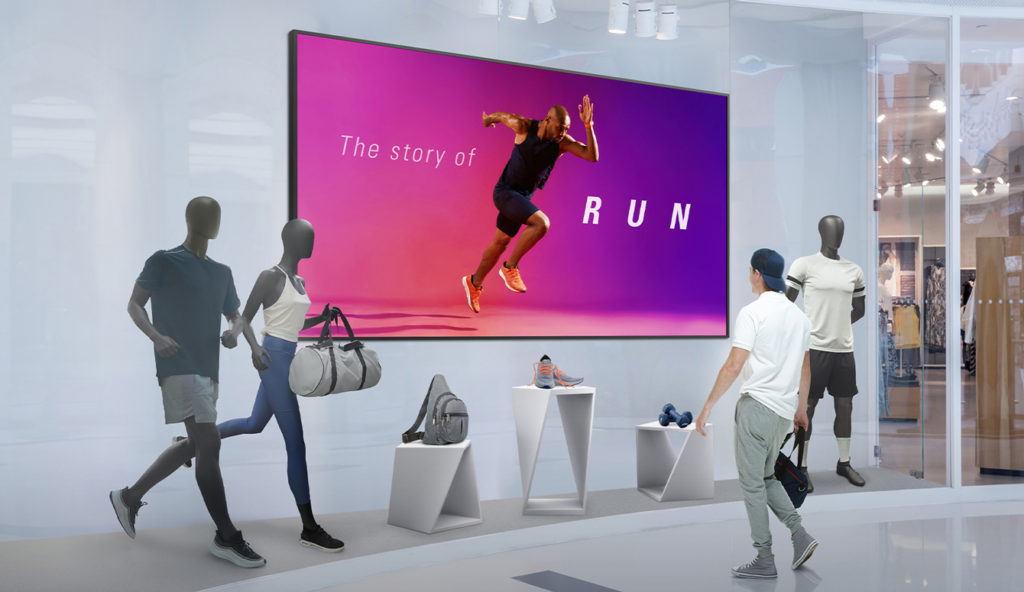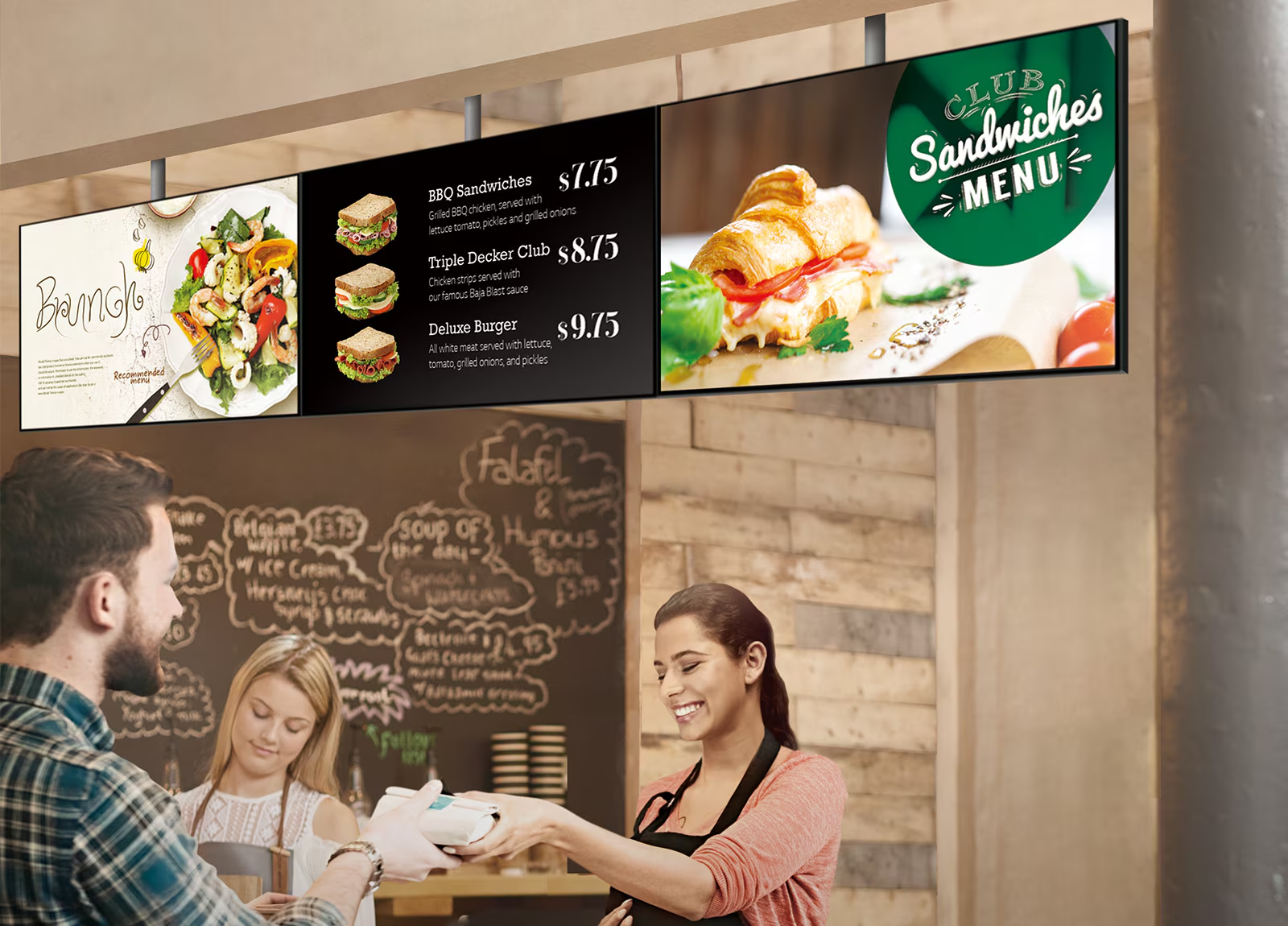Digital signage is no longer just a tool for broadcasting generic messages. With advancements in data analytics, digital signage has evolved into a powerful medium for delivering personalized content that resonates with specific audiences. This article explores how data-driven insights are transforming the way content is created, managed, and delivered through digital signage systems.
The Role of Data in Content Personalization
Data plays an incredibly critical role in allowing businesses to personalize their digital signage content and marketing strategies. Businesses will typically collect multiple different types of data, such as customer profiles and location data, in order to better understand their audiences. From audience behavior, to preferences, and even demographics, data provides valuable insight that allows your digital signage to best reach your intended audience.
This data typically comes in many forms, including but not limited to:
- Customer Profiles: This kind of data includes information such as age, gender, and even past purchasing behavior. Perhaps one of the most important types of data available, this is instrumental in deciding how to tailor your content to your audience. For example, do your female customers prefer a certain item? Does that item differ by age?
- Location-Based Data Analytics: Insights gathered from GPS, beacons, or even Wi-Fi that help in delivering content relevant to specific locations. For example, a restaurant with multiple locations might track how certain items or even their other analytics differ from store to store. Does a promotion perform much better in a certain city or neighborhood?
- Real-Time Analytics: This is a type of data that is gathered in real-time, such as foot-traffic, dwell time, or number of interactions with your digital signage.
- Social Media and Web Data: Data retrieved from trends and popular topics from social media and other web activity. This kind of data includes things such as SEO keywords and search activity, and can greatly influence content decisions if utilized properly.

The Benefits of Data Personalization for Digital Signage
Digital signage can greatly benefit from data analytics and data personalization, adding to the already incredible impact it can have on any business. One of the key aspects of digital signage, its content, is perhaps the area that can utilize data personalization the best. The information gained from various sources of data, as outlined in the section above, can help businesses decide what type of content works best for their specific audience.
Some of the more popular benefits of digital signage data personalization are:
- Increased Engagement: Personalized content is much more likely to catch the viewers attention and engage them, especially compared to standard or generic messages. This style of engagement typically targets a specific audience or message in order to best engage your customers. For example, if a restaurant’s data shows that the majority of their customers at lunch time are students, they may specifically tailor their content, promotions, and messaging to those students.
- Higher Overall Conversion Rates: Tailored content that speaks to your audience and their interests directly often results in much higher conversion rates. Depending on your business and their needs, conversions may look like sales, sign-ups, take out orders, or something else entirely. By speaking directly to their interests, and aligning them with your desired message, customers are more likely to convert.
- Enhanced Customer Experience: One of the benefits of digital signage is that it greatly increases the customer experience. These customer experiences are only further enhanced through the use of personalized digital signage content. By delivering relevant and timely information, visitors and customers are able to easily find what they want, understand promotions, and make informed choices. In short, personalized content helps make customer interactions more meaningful and satisfying.
- Greater Brand Loyalty: Consistently delivering personalized images, videos, and messages is proven to help build a stronger relationships with your customers, fostering brand loyalty and customer retention.

How To Personalize Digital Signage Content Using Data
Personalizing your digital signage content can seem intimidating at first, but it is not as difficult as it may seem. Using a number of proven techniques, along with a well-developed strategy for data and analytics, personalizing your content is quick and simple. Here are just a few of the techniques for personalizing content that we recommend:
- Audience Segmentation: By dividing your audience into smaller segments based on demographics, such as age, gender, and location, you can more easily target your content towards those demographics. We recommend pairing this segmentation with other forms of data analytics, such as traffic demographics, in order to get the most out of this digital signage personalization strategy.
- Dynamic Digital Signage Content: Dynamic digital signage content, such as videos and images, are proven to be extremely effective for many different kinds of businesses. Utilizing templates and data feeds, businesses can automatically update content with information such as weather, time of day, or current promotions.
- Interactive Digital Signage: Interactive digital signage is the perfect place for personalized content for digital signage. Allowing users to interact with your signage displays using touch screens, or even mobile integration, enables the delivery of highly personalized content. Users can input their own information, and these interactive personalized displays can showcase the perfect content for that user.
- AI and Machine Learning: Ai and machine learning are relatively new yet extremely powerful technologies that have been revolutionizing the digital signage industry. Leveraging AI to analyze large datasets, and provide valuable insights, can drastically reduce the time needed to analyze data and create personalized content. While AI can also be used to predict which types of content will be most effective, we recommend having a human proof their strategy first.

Challenges in Personalizing Digital Signage
Though personalizing digital signage content with data is extremely effective, it is not without its challenges. Overcoming these challenges is the key to creating a truly effective personalization strategy. Below are some of the more prominent challenges business owners may encounter:
- Data Privacy: Collecting and utilizing personal data for content personalization must be done in compliance with data protection regulations. These regulations, such as the GDPR, ensure that your customer’s privacy is respected and are extremely important to protect both your business and your customers.
- Content Management: Content management can be time consuming, especially when you take into account the vast array of data required for content personalization. Advanced content management systems, also called CMS, are often required to handle the dynamic nature of more personalized digital signage installations.
- Integration with Other Systems: Depending on the other systems your business uses, your digital signage may need to be integrated with one or more other systems. Examples of these systems are CMS systems, social media, and other location based services.

In Conclusion
In conclusion, data personalization is reshaping the landscape of digital signage, making it a more powerful tool for businesses to connect with their audiences. By leveraging data to tailor content, businesses can enhance engagement, improve customer experiences, and drive better results.
Related Posts

Sustainable Solutions: How Digital Signage Helps American Businesses Go Green
As sustainability becomes an increasing priority for modern American businesses, many business owners are looking for innovative ways to reduce their carbon footprint and adopt eco-friendly practices. Digital signage offers a compelling

Adapting Digital Signage for Seasonal Campaigns and Holiday Promotions
The holidays are fast approaching, which means many businesses are gearing up for their holiday marketing campaigns, promotions, and initiatives. There are many ways to use digital signage for holiday

5 Ways to Use Outdoor Digital Signage
Outdoor digital signage has become extremely popular in recent years and for a very good reason. This incredible technology has seen numerous advancements that allow it to be a staple

The Future of Outdoor Digital Signage: Weatherproof Displays and Sustainability
The future of outdoor digital signage is increasingly shaped by two key trends: the need for weatherproof displays and the drive toward sustainability. These trends are driven by technological advances,

